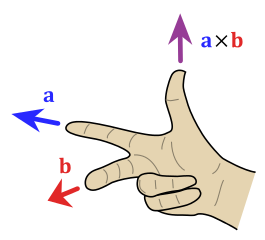So I apologize if this question seems a bit nit-picky, but it has bothered me for a while. Usually when a coordinate system is represented in two-dimensions, the x-axis is pointing towards what might be considered "3 o' clock", while the y-axis is at midnight.
However, most representations of 3-dimensional space place the x-axis in the "6 o' clock" direction, and the Y axis in the "3 o'clock" direction.(if you were to lay the clock on the x-y plane).
It does not seem like the intuitive way of representing things. Of course a person has the liberty to arrange the axes in whatever fashion they see fit, but the standard seems to be the way shown above. I wonder who thought it was a good idea to arrange the axes in this fashion, and why they chose to do so.



